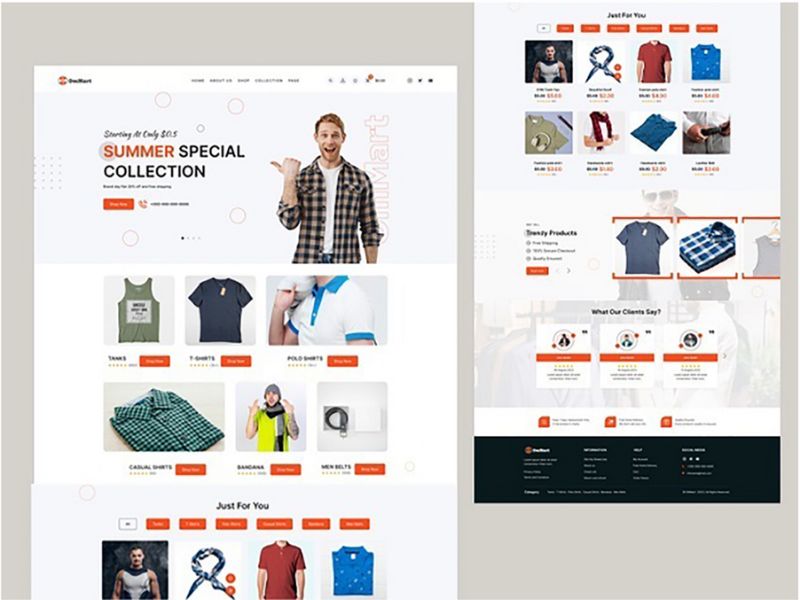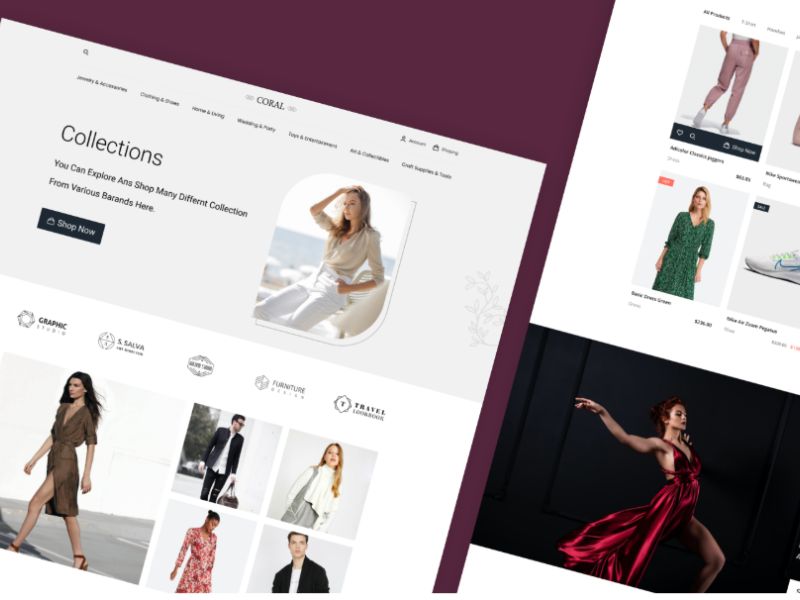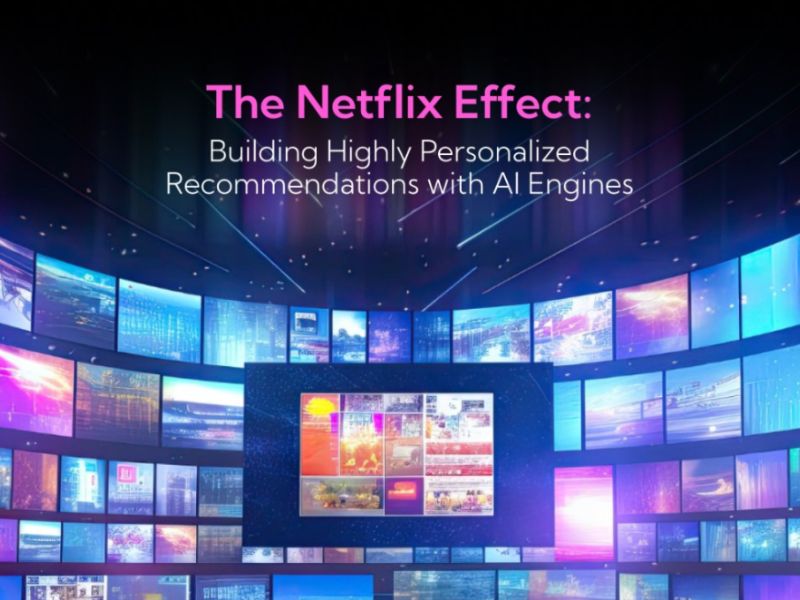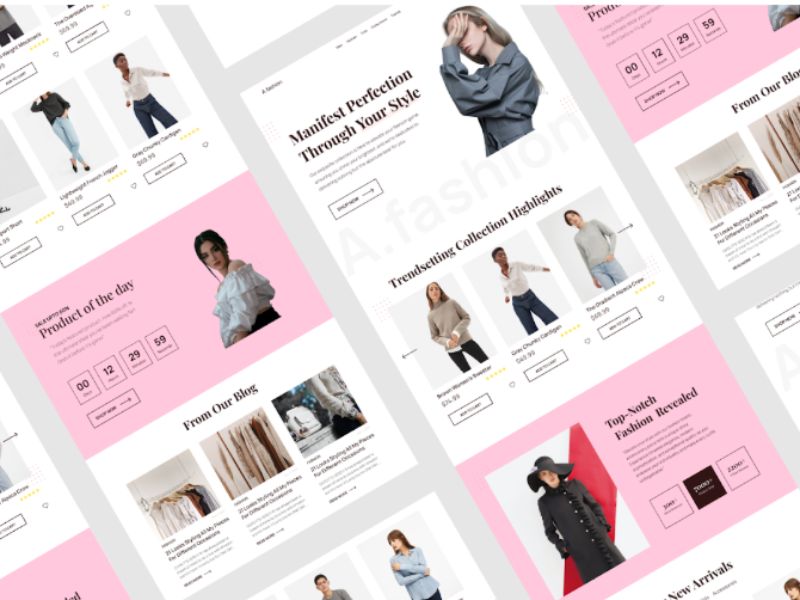Introduction
In the digital era, competition in e-commerce is not only about offering products but also about enhancing user experience (UX). Personalized user interfaces (UI) have become a key trend, helping businesses attract customers and increase conversion rates.
According to forecasts, global online retail sales are expected to reach $6.51 trillion by 2023, highlighting the importance of e-commerce in the economy. Personalized UI is not just a revenue growth factor but also plays a crucial role in customer satisfaction and loyalty.
Personalized UI and Its Impact on UX
What is Personalized UI?
Personalized UI is the process of customizing an application’s interface based on user behavior, preferences, and needs. Unlike traditional product recommendation systems, personalized UI can modify layouts, functionalities, and content display, making users feel that the interface “understands” and serves them better.
Benefits of Personalized UI
- Increased Conversion Rates: A personalized interface reduces bounce rates, increases session duration, and boosts average order value (AOV).
- Enhanced Customer Satisfaction: A smooth and relevant user experience encourages repeat visits.
- Strengthened Customer Relationships: Personalized UI helps build long-term relationships while enabling businesses to collect and analyze customer data effectively.
- Improved Accessibility and Usability: Personalized UI ensures that different user segments, including those with disabilities, can access and navigate digital platforms seamlessly.

Effective Methods for UI Personalization
A/B Testing and Multivariate Testing
Businesses can use A/B testing to compare different personalized UI versions and choose the best-performing one based on conversion rates, bounce rates, and user feedback. Multivariate testing allows testing multiple UI elements simultaneously, helping businesses understand which combination works best.
AI and Machine Learning in UI Personalization
Artificial Intelligence (AI) and machine learning algorithms can analyze user behavior in real-time, providing dynamic UI adjustments. For example, AI-driven chatbots can personalize user interactions, while recommendation engines suggest content and products tailored to user preferences.
Behavioral and Demographic Data Utilization
By collecting and analyzing data such as browsing history, purchase behavior, and demographic details, businesses can tailor UI experiences to specific user segments. This approach helps create hyper-personalized interfaces that cater to individual needs.
Collecting User Feedback
Surveys, feedback forms, and usability testing help businesses better understand customer needs and optimize UI based on their preferences. Direct input from users ensures that personalization efforts align with actual user expectations.
Adaptive and Responsive Design
A well-personalized UI must be adaptive to various devices and screen sizes. Responsive web design ensures that content and layout adjust dynamically, providing a seamless experience across desktops, tablets, and mobile devices.

Case Studies of Successful UI Personalization
Amazon’s Personalized UI Approach
Amazon has mastered the art of personalization by leveraging AI-powered recommendation systems, dynamic homepage customization, and targeted promotions. Each user sees a unique homepage based on their browsing and purchase history. The “Customers who bought this also bought” and “Recommended for you” sections increase engagement and sales by presenting relevant product suggestions. Amazon also uses behavioral tracking to optimize search results, ensuring customers find what they need faster. This personalized shopping experience has significantly boosted conversion rates and customer retention.
Netflix’s Dynamic UI Personalization
Netflix takes personalization to the next level by analyzing user viewing history, watch duration, and even the devices they use. The platform dynamically curates personalized content recommendations based on genre preferences, actors, and viewing patterns. One of Netflix’s unique personalization strategies is customized thumbnail artwork—different users see different cover images for the same movie or series based on their interests. For example, a user who watches a lot of romantic dramas may see a romance-centric thumbnail for a film, while a comedy fan may see an image featuring a comedic moment. This subtle personalization enhances user engagement and increases watch time.
Spotify’s Data-Driven UI Personalization
Spotify utilizes machine learning to offer highly personalized music recommendations. Features like “Discover Weekly” and “Daily Mix” analyze a user’s listening habits and suggest new songs based on their preferences. Additionally, Spotify’s UI adapts based on user behavior, showing different homepage layouts depending on whether a user frequently listens to playlists, albums, or podcasts. The “Wrapped” annual report is another example of effective UI personalization, as it provides users with insights into their listening trends in an engaging and shareable format. By continuously refining its personalization techniques, Spotify has improved user retention and satisfaction.
Airbnb’s Personalized Booking Experience
Airbnb personalizes the user experience by tailoring search results, recommendations, and user interface elements to match individual preferences. The platform considers factors such as previous bookings, search history, and location preferences to suggest the most relevant listings. Users who frequently book beachfront properties, for example, may see coastal accommodations highlighted in their recommendations. Airbnb also uses dynamic pricing to provide personalized discounts and suggestions, making the booking experience more user-centric and efficient.
YouTube’s Personalized Content Discovery
YouTube’s homepage and recommended videos section are completely personalized for each user. The algorithm considers factors such as watch history, engagement levels, and video likes to curate content that keeps users engaged. The platform also personalizes video thumbnails and descriptions to appeal to different user segments. By refining its content discovery system, YouTube ensures that users spend more time on the platform, increasing ad revenue and engagement.

Challenges in Implementing Personalized UI
Privacy and Data Protection Concerns
Collecting and utilizing user data for personalization requires compliance with privacy laws such as GDPR and CCPA. Businesses must ensure transparency and obtain user consent for data collection.
Balancing Personalization with User Control
While personalization enhances UX, excessive customization may feel intrusive. Providing users with control over personalization settings ensures a balance between automation and user autonomy.
Technical Complexity and Implementation Costs
Developing a robust personalized UI requires investment in AI, machine learning, and data analytics. Small businesses may face budget constraints in implementing advanced personalization strategies.

Conclusion
Personalized UI is a powerful tool that enhances user experience, drives engagement, and strengthens customer loyalty in e-commerce. By leveraging AI, data analytics, and adaptive design, businesses can create seamless and highly customized digital experiences. However, ethical considerations such as privacy protection and user control must be prioritized to ensure sustainable and user-friendly personalization strategies.
Incorporating personalized UI effectively will not only boost conversion rates but also establish long-term relationships with customers, ultimately leading to a more competitive edge in the digital marketplace.






